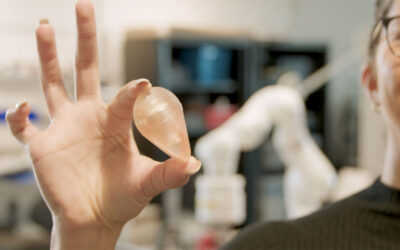Joint replacement surgery is one of the most common procedures prescribed for patients suffering from osteoarthritis. In about 10% of such replacements, revision surgery is required within a decade due to mechanical loosening and failure of the implant, where a lack of favorable interactions between the host bone tissue and implant prevents their bonding.
Now, in an attempt to cut down on the number of revisions needed, an MIT research group have developed an easily fabricated, conformal, osteophilic coating for orthopedic implants, which can promote true bonding, such that the implant is locked with the bone tissue resulting in the biological fixation of the implant. The coating contains two parts – a degradable osteoinductive module which releases bone morphogenetic protein, promoting differentiation of precursor mesenchymal stem cells into osteoblasts laying down new bone which preferentially adhere to the non-degradable osteoconductive module, containing hydroxyapatite, located below the degradable osteoinductive module.
By having both these characteristics within the film, the researchers believe that it may be possible to accelerate the differentiation cascade in precursor stem cells translating into faster bone formation over shorter times on and around the implant substrate for true integration, with the goal of offering successful and lasting joint replacement, wound healing and repair.
















